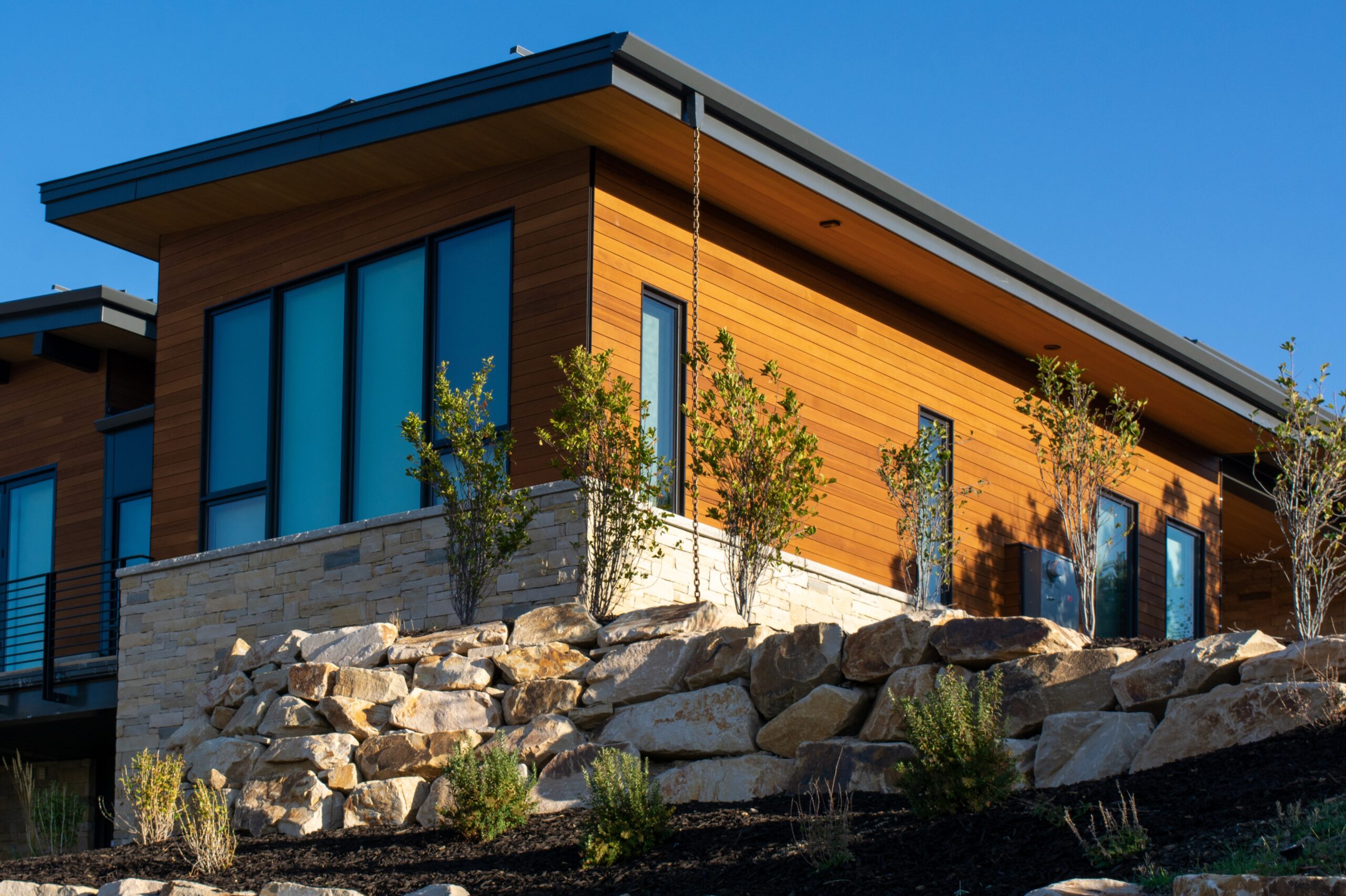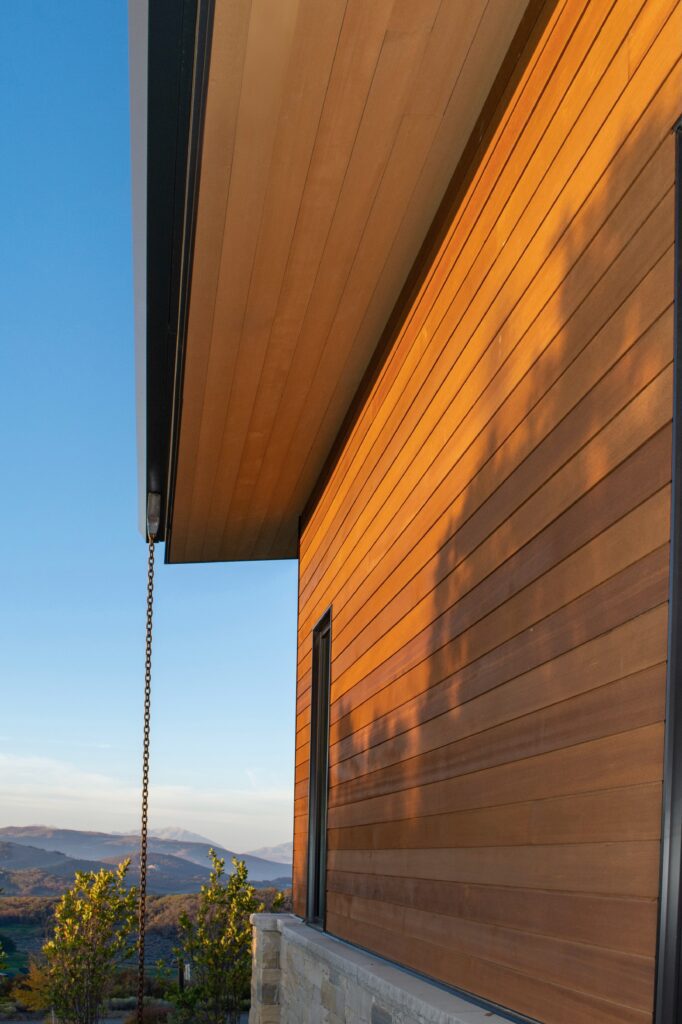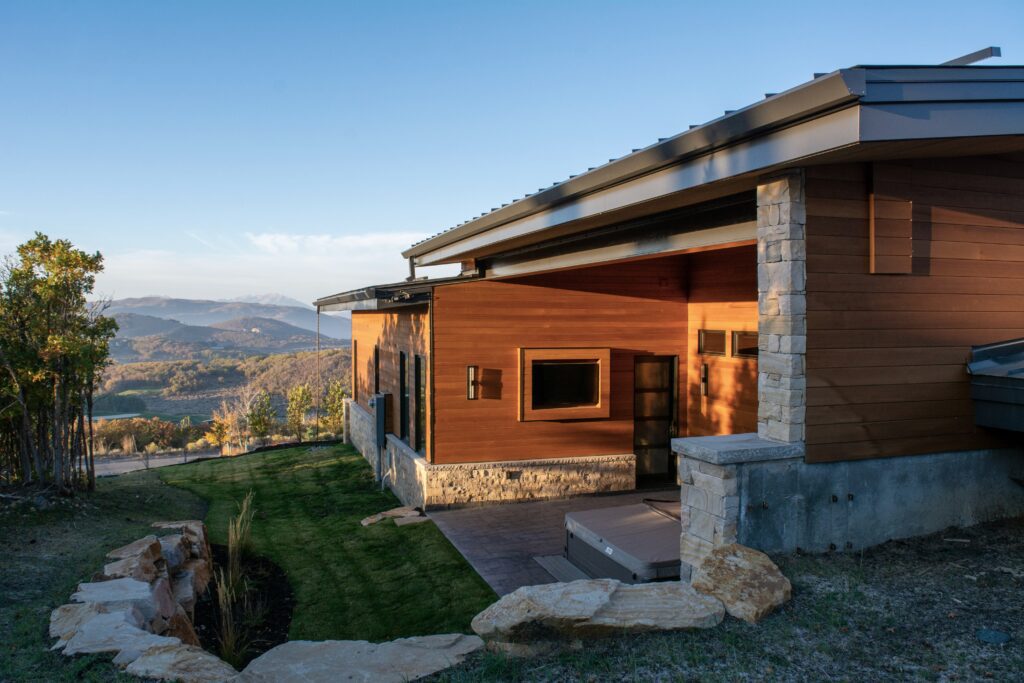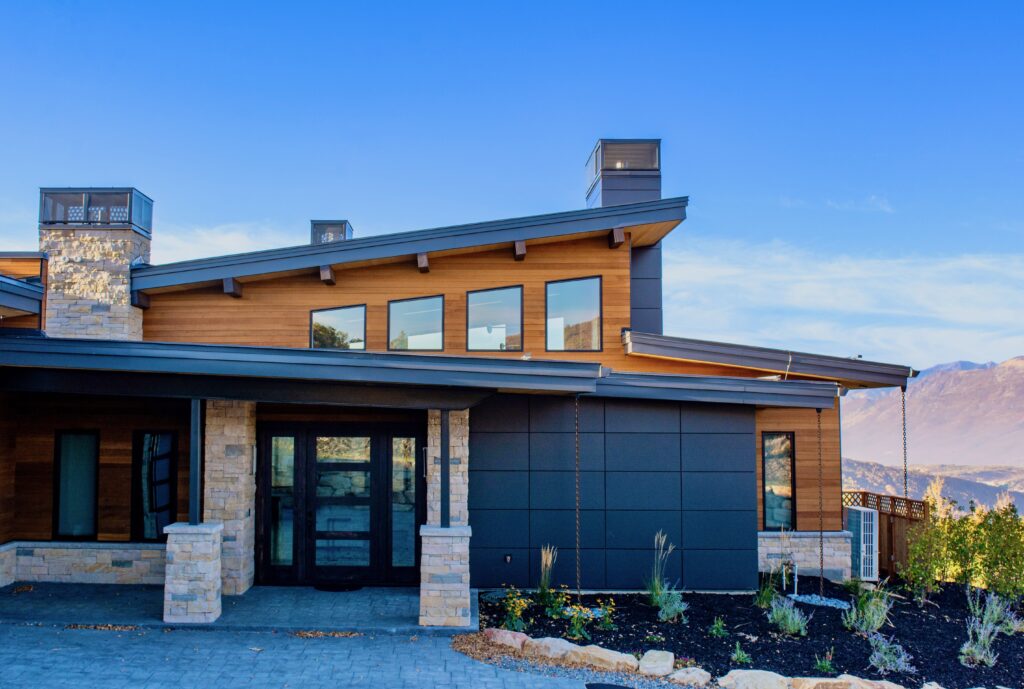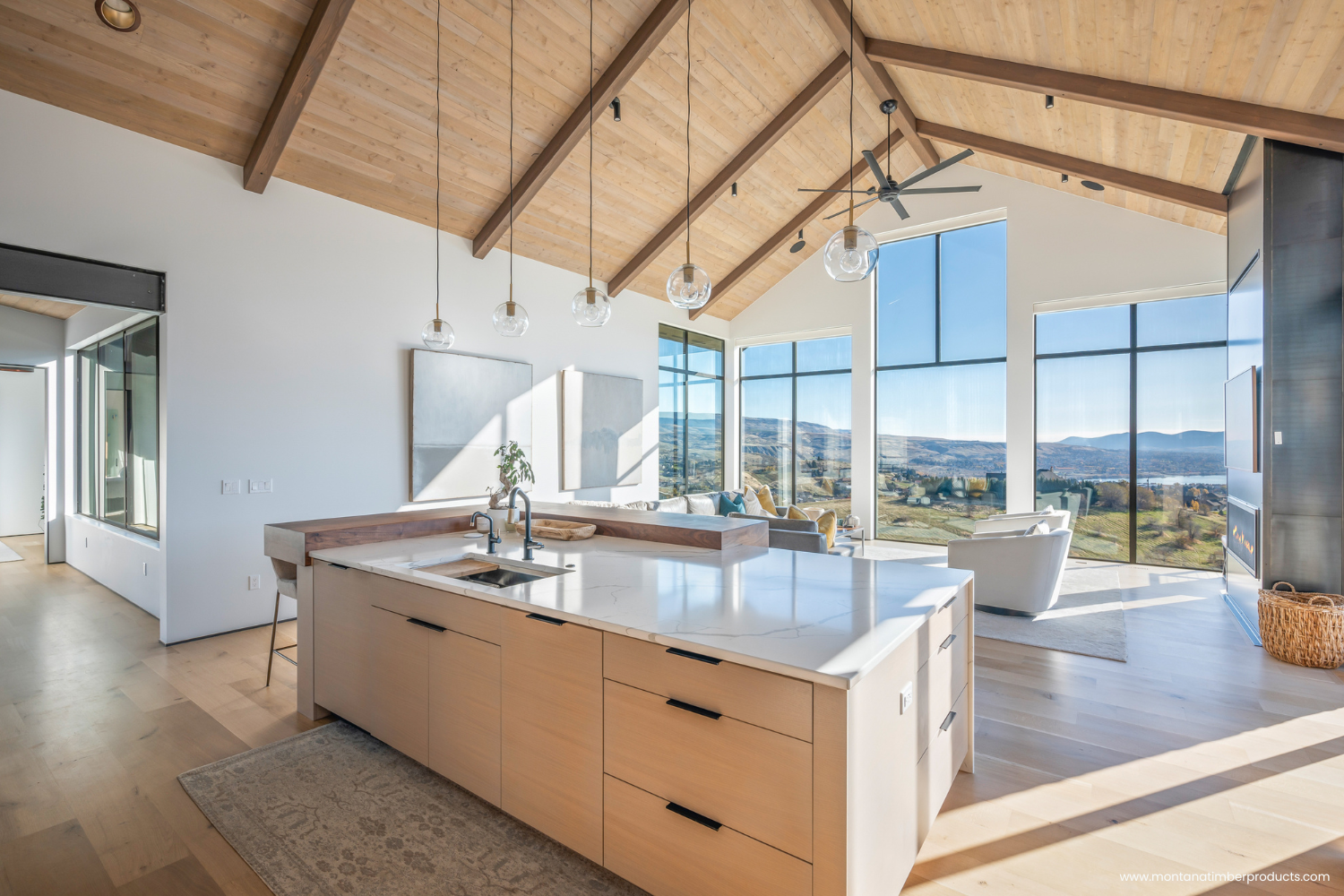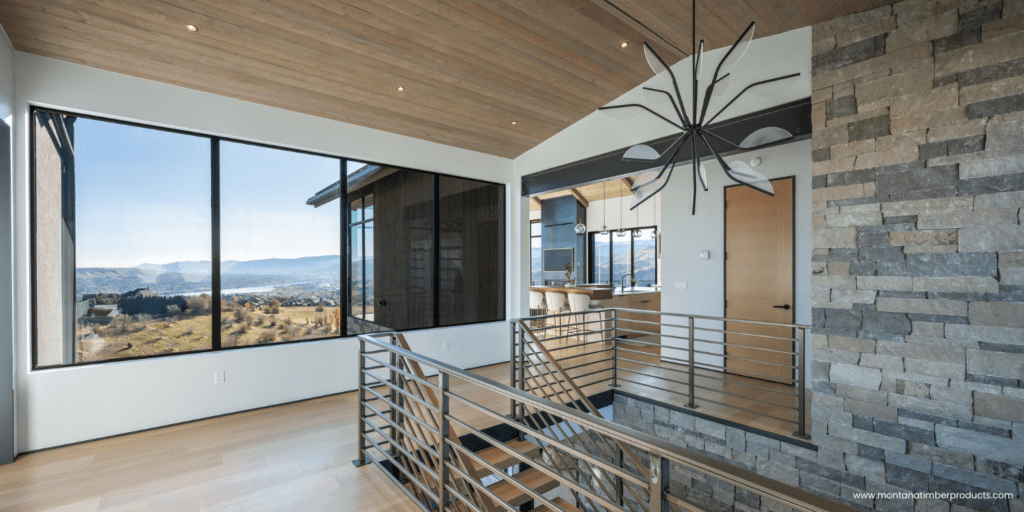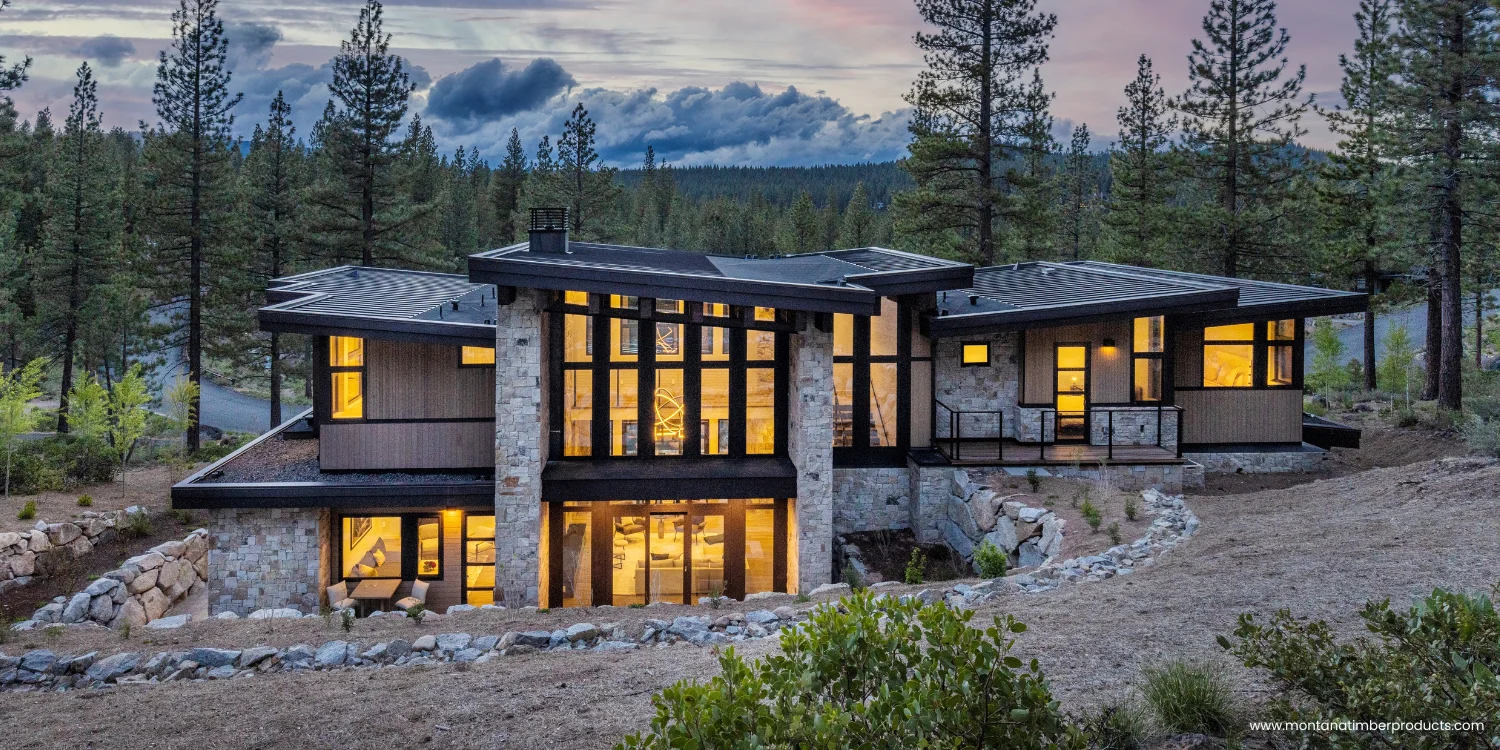Ceiling Designs with Natural Wood Paneling in Southwest Utah
Posted on: December 16, 2024
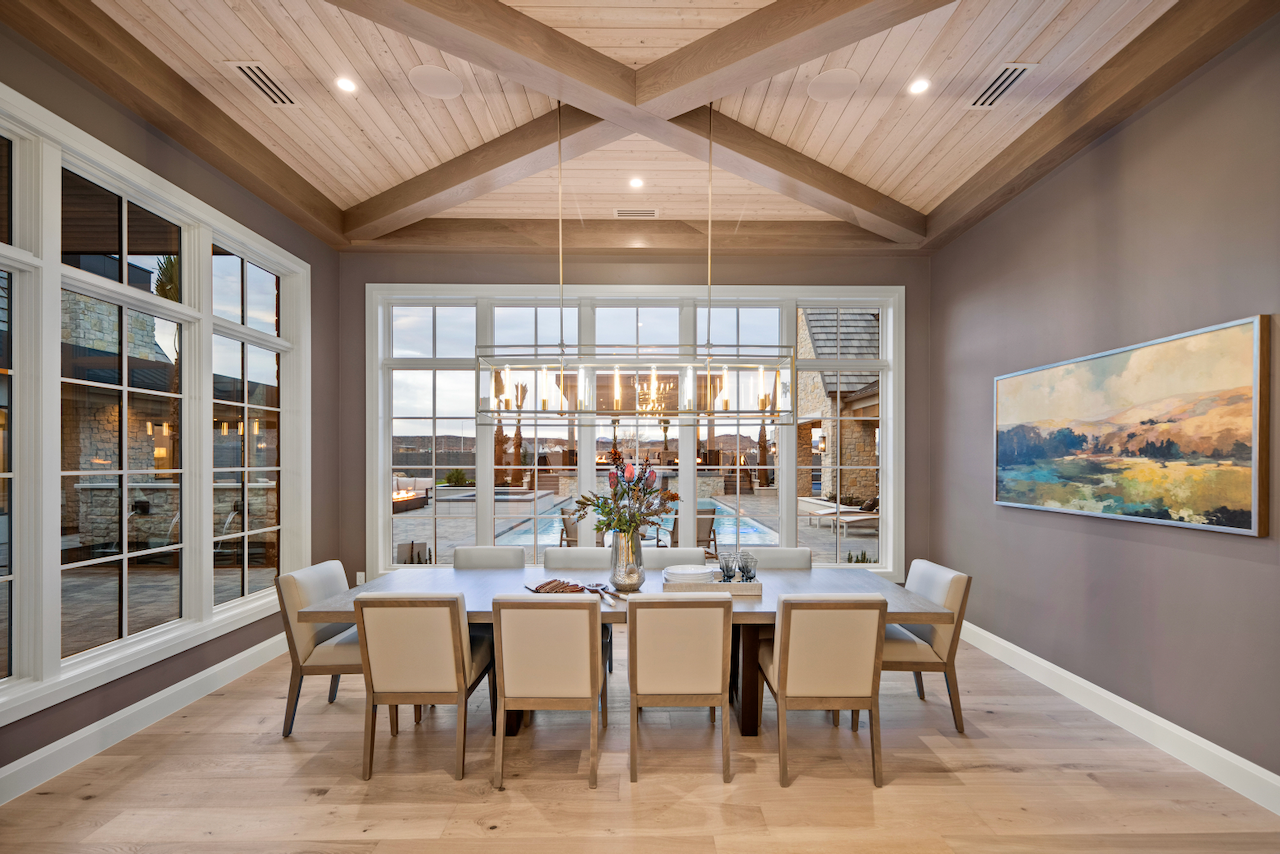
AquaFir™ Brings Light, Complementary Natural Tones to Life at Stunning Residence
Project Details
Location: St. George, UT
Project Type: Private Residence
Applications + Products
Exterior Ceiling Paneling:
Color: AquaFir Driftwood
Custom Profile: 1×6 T&G with 1/8″ reveal
Texture: Smooth
Interior Ceilings:
Color: AquaFir White
Custom Profile: 1×6 T&G with 1/8″ reveal
Texture: Smooth
Wood Species + Grade
Kiln-Dried Douglas Fir | #2Btr
THE VISION
Harmonizing with Architectural Surroundings
This striking St. George residence showcases the versatility and beauty of the AquaFir™ product line. Seamlessly tying together exterior and interior wood ceilings. The goal was to create a fluid design transition from exterior to interior spaces. Designed with light wood finishes in Driftwood (exterior) and White (interior), these color options harmonize with the existing structural elements to achieve a refined aesthetic.
THE SOLUTION
Light AquaFir™ Color Options Accent the Ceilings
The AquaFir™ product line offers premium prefinished wood paneling that is tailored to meet both aesthetic and functional needs in the desert climate.
Exterior Application
- Driftwood Color Option: A natural, weathered look that harmonizes with the desert environment.
- Durability: AquaFir™ excels in UV resistance and moisture protection, making it ideal for harsh climates.
Interior Application
- White Color Option: Brightens the space, creating an airy and inviting atmosphere.
- Refined Aesthetic: Smooth texture and custom T&G profile contribute to a modern, polished interior design.
Design Considerations
- Seamless Transition: The consistent use of AquaFir™ for both exterior and interior applications ensures design continuity throughout the home.
- Custom T&G Profile with 1/8″ Reveal: Delivers a sleek, contemporary appearance while simplifying installation.
- Eco-Friendly Approach: AquaFir™ aligns with sustainable building practices by enhancing wood’s natural properties without harmful chemicals.
THE RESULT
This St. George residence showcases how the AquaFir™ product line can elevate residential design by combining form and function. The exterior Doug Fir ceilings, in driftwood color, provide lasting protection against the elements. The Doug Fir white interior ceilings enhance the living space with brightness and elegance. The custom T&G profile with a 1/8″ reveal adds a unique touch to both applications, creating a cohesive look throughout. Montana Timber Products’ AquaFir™ demonstrates its versatility as a premium wood paneling, delivering timeless beauty and reliable performance.
Project Gallery










